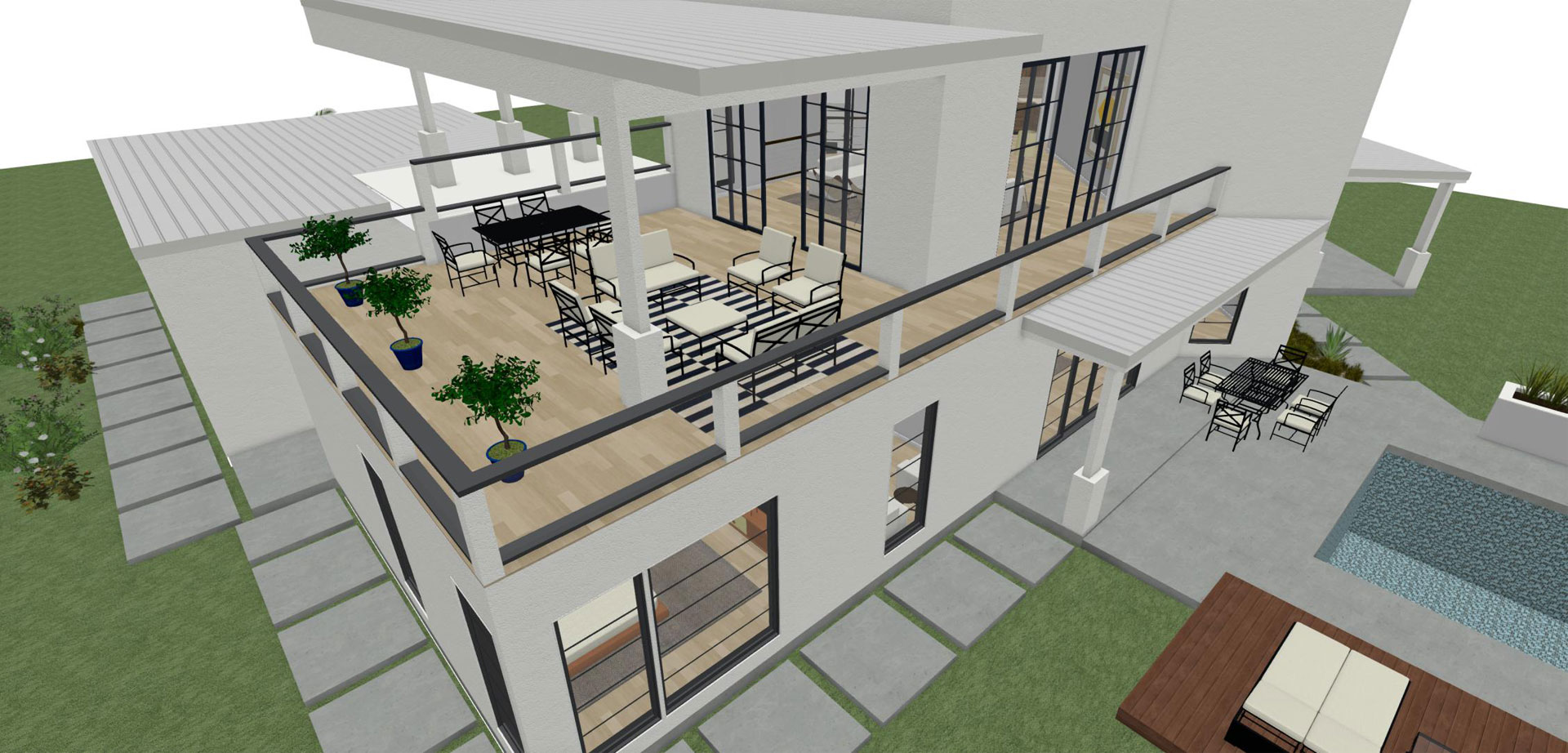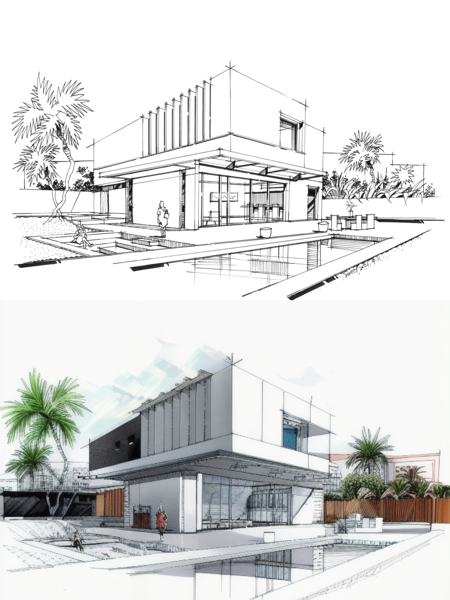The Effect of Technical Advancements on the Layout Practices of Contemporary Architects
The quick development of technological devices has dramatically improved the design landscape for modern designers, fostering unprecedented degrees of development and sustainability. The integration of Structure Information Modeling (BIM), parametric layout, and expert system has not just structured collaboration amongst diverse groups but additionally redefined job execution. Nevertheless, as architects welcome these developments, they are challenged with complicated challenges that might impact their innovative processes. Exploring these characteristics reveals a nuanced interaction between innovation and traditional style methodologies, triggering a better evaluation of what the future holds for building practices.
Advancement of Architectural Tools
Just how have building tools transformed the layout and construction procedures over the centuries? The evolution of architectural devices has actually dramatically impacted the effectiveness, precision, and creative thinking of layout and construction. In old times, engineers depend on primary instruments such as plumb bobs, determining poles, and standard geometry to create structures. These tools laid the foundation for early architectural method, permitting the building of famous frameworks, albeit with constraints in accuracy and intricacy.
With the arrival of the Renaissance, the intro of the compass and the protractor marked a pivotal change. These devices allowed architects to attain higher accuracy in their layouts, assisting in the emergence of even more elaborate and proportionate structures. The Industrial Transformation further changed architectural experiment the intro of mechanized tools and products, permitting bigger and a lot more ambitious tasks.
In the 20th century, the development of computer-aided layout (CAD) software application transformed the landscape once more, offering architects with unmatched capabilities in modeling and visualization. Today, progressed tools such as Structure Info Modeling (BIM) and parametric design software program remain to press the limits of building advancement, enabling an extra integrated strategy to style and building and construction procedures.
Enhanced Collaboration in Style
As modern technology remains to progress, enhanced partnership in style has become a foundation of modern-day building technique. The integration of digital devices such as Structure Details Modeling (BIM), cloud-based platforms, and advanced visualization software application has actually transformed the method engineers, engineers, and stakeholders engage throughout the style process. These devices promote real-time interaction, permitting teams to share ideas, modifications, and comments quickly, no matter geographical location.

Additionally, interdisciplinary collaboration has actually been streamlined with these technological improvements, allowing architects to function a lot more very closely with other experts, such as urban planners and environmental specialists. The outcome is an extra natural technique to design that considers various viewpoints and expertise. Eventually, boosted partnership in style is not just a trend; it is crucial for producing ingenious, practical, and aesthetically pleasing style in a significantly complicated globe.
Sustainability With Innovation
Sustainability in architecture has increasingly come to be intertwined with technological advancement, driving the sector towards ecologically accountable practices - cda architects. Contemporary designers are leveraging sophisticated technologies to minimize environmental effect while enhancing the performance of buildings. One prominent instance is using Structure Information Modeling (BIM), which permits for precise preparation and source allocation, minimizing waste during building and construction and advertising energy effectiveness throughout a building's lifecycle
Additionally, wise products and energy-efficient systems are being integrated right into styles to optimize source use. Technologies such as photovoltaic cells and green roof harness sustainable energy sources, adding to minimized carbon footprints. Additionally, the application of expert system in design procedures makes it possible for architects to replicate and analyze power usage, guiding decisions towards more lasting results.
The assimilation of lasting modern technologies not only straightens with global ecological objectives yet additionally fulfills an enhancing demand from customers for green remedies. As architects embrace these developments, the emphasis changes in the direction of developing spaces that are not only cosmetically pleasing yet also functionally lasting, therefore redefining the standards of modern design. This way, technology functions as a stimulant for sustainability, allowing designers to make buildings that regard and boost the native environment.
Difficulties in Application
While technical advancements in architecture hold excellent pledge for boosting sustainability, their implementation original site frequently experiences significant obstacles - cda architects. One key barrier is the steep learning curve connected with new innovations. Architects and building and construction specialists might call for considerable training to successfully make use of sophisticated software and devices, which can postpone job timelines and enhance costs
Additionally, the integration of emerging modern technologies, such as Structure Information Modeling (BIM) and lasting products, often necessitates cooperation throughout multidisciplinary groups. This collaboration can be prevented by distinctions in knowledge, workflows, and communication styles, causing potential problems and inefficiencies.
Financial restrictions further make complex the adoption of cutting-edge technologies. Lots of building firms, especially smaller ones, may lack the sources to buy innovative tools, limiting their capacity to take on bigger firms that can manage such investments.
In addition, regulatory structures and building codes may not equal technological improvements, producing uncertainty and potential conformity concerns. This obstacle can inhibit architects from totally accepting brand-new modern technologies, as the risk of non-compliance might outweigh the benefits. Consequently, attending to these execution challenges is essential for the successful combination of technical advancements in contemporary building practices.
Future Fads in Design
The difficulties connected with the application of brand-new technologies in architecture have actually motivated a reevaluation of future fads within the sector. As engineers browse concerns such as sustainability, urbanization, and social equity, they are increasingly taking on innovative modern technologies to boost design performance and ecological performance.
One prominent trend is the combination of synthetic intelligence (AI) in the layout procedure. AI devices can evaluate substantial datasets to notify design decisions, improving both creative thinking and capability. Likewise, Building Details Modeling (BIM) proceeds to progress, making it possible for real-time cooperation among stakeholders and assisting in streamlined project administration.
Lasting layout methods are additionally gaining energy, with architects concentrating on adaptive reuse and regenerative design principles that reduce resource usage and waste. The incorporation of clever products and renewable energy sources will better improve the durability of structures despite climate change.

Final Thought
Technical developments have pop over here actually dramatically reshaped architectural style methods, assisting in boosted accuracy, cooperation, and sustainability. The combination of tools such as Structure Information Modeling and parametric design software, together with artificial intelligence and wise products, equips engineers to address intricate challenges extra properly.